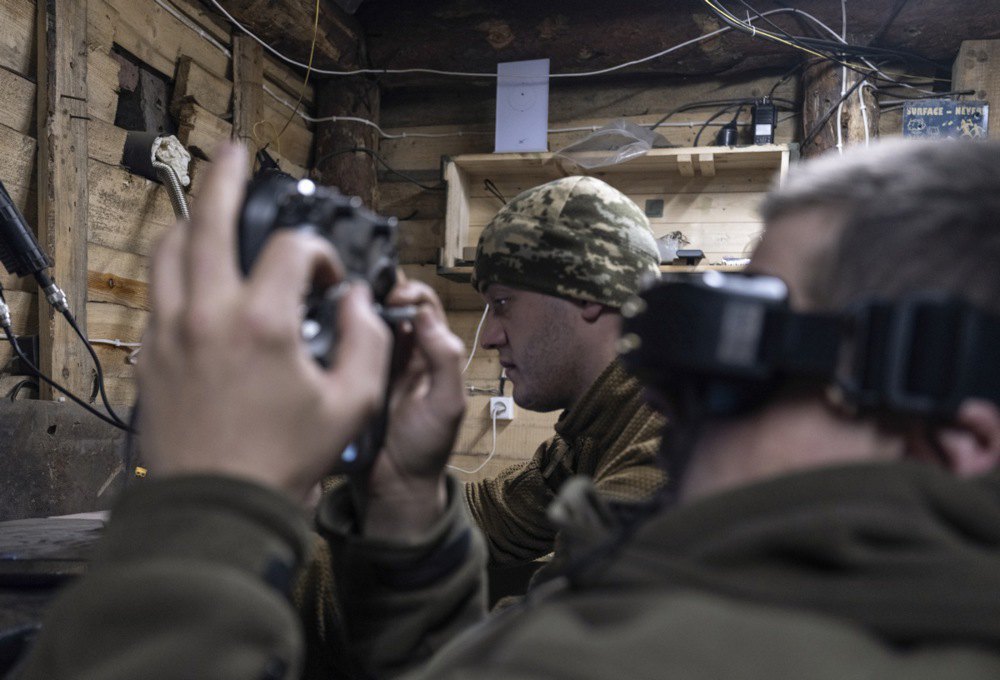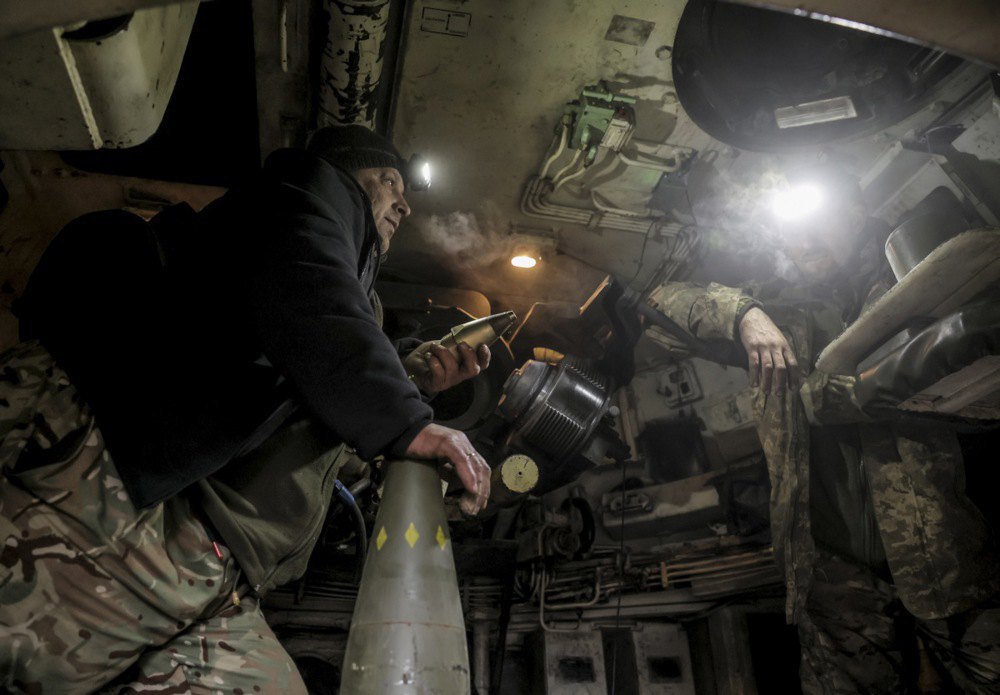
This is because drones have their limitations.
And it's not just the weather. There are a limited number of civilian frequencies and a limited response time (sometimes 15-20 minutes). It's a shame when it's impossible to work because of fog or thunderstorms, clouds jam the signal, or the propellers freeze – these are all understandable things.
But more important is the delicate balance between the power of the warhead, the capacity of the batteries and the range.
There are charges that can destroy a house, but the carriers do not fly far and are vulnerable to interceptors. In fact, over-the-horizon ATGMs often lack power.
It is also tied to logistics in the red zone, where the same Russian drones are operating, and you have not arrived with a supply of batteries, heads and dumps.
Having a drone and having a drone ready to fly are two different stories.
Drones are vulnerable to interceptor drones and fighters – it is not yet possible to put both protection systems and a head on a UAV. And it is unlikely to be possible in the near future.
And fibre optics are not always effective in bushes and plantations – they get cut off and tangled.
In addition, the Russian military can simply dig a two-rolled caponier under a mortar, for example, which cannot always be penetrated even by a 152 mm shell. A long floor at an acute angle and nets protect its entrance, and the logistics are carried out by motorcyclists, literally with several mines in their backpacks.

Even if the pilot has seen the exits and spotted the hole, you can spend a dozen drones but not hit the ammunition in the caponier or the mortar.
Meanwhile, the position next door comes to life – they pump 120 mm out of the hole, twist the net, make a dozen shots, and hide again. Meanwhile, all these donkeys, mules, ATVs and sheep on crutches are bringing them ammunition.
The pace of the offensive has slowed down, especially with the knocking out of transport, but the mortars are alive and the artillery is working. It is not easy to isolate the battlefield.
Most of the artillery positions on both sides of the front are stationary, and they are far from the labyrinths of concrete and wood of the First World War, with their multi-level shell cellars and two-tiered dugouts.
Nowadays, it's more often a pit with a net and a dugout with a turn. And yet the gunners somehow survive as a system.
That is why artillery reacts quickly, does not depend on the weather, can put up a fire screen, minefields, deliver more metal in tonnes to a specific area of the battlefield, mows down human waves with the help of cassettes, and survives well in stationary positions – there is no alternative to it yet.
Ukraine is critically dependent on the supply of shells from the West, especially 105-155 mm calibre, just as Russia is dependent on supplies from Iran, North Korea and notional Belarus – the depletion of stocks has reached a limit.

As part of the Czech initiative, Prague is using money from the EU coalition to buy shells of various calibres, both post-Soviet and Western, from third-country markets (South Africa, India, Pakistan).
They do not reveal their suppliers because the Russians may be doing the same and may raise prices. In addition, sellers do not need sabotage either.
In the four months of 2025, the Czechs have already found 400,000 shells, which is a lot. And this is significant timely assistance.
The EU continues to increase its production capacity. Even before the US started to withdraw from the process of helping Ukraine and Trump won, the EU ordered quenching furnaces, hydraulic presses and automatic lines to increase production, which will have an effect sometime next year.
The Europeans have built at least three new shell factories: Rheinmetall is expanding its facilities in Unterlüs, in northern Denmark it is resuming production at the long-closed Elling factory, and the UK has built a new line in Glascoed. Production is also being scaled up in Finland and Spain, and in all areas – cartridge case hardening, production of explosives, fuzes, gunpowder, etc.

Across the UK, the BAE is opening containerised micro-plant facilities for the production of synthetic explosives (hexogen) – each producing only up to 100 tonnes a year – but thanks to automation and decentralisation, the British plan to ramp up and close the shortfall faster than the capacity of one large plant.
The European Union's plan for 2025 is 2 million shells, and 2.4 million next year. This looks more optimistic than a year ago, when it was said that the EU would not be able to produce 1.2 million. But they have managed and are scaling up.
However, even with Ukraine's domestic production, a joint venture with the Germans, and the Czech initiative, we are still twice as far behind Russia and North Korea, although the enemy will never return to the 30-40,000 rounds per day of the invasion.
Combined with precision-guided shells, the fact that Western artillery is firing farther and more accurately, and a coalition of drones to combat Russian artillery, we have so far managed to contain the enemy.
Distances also have an impact – the EU can supply us literally from the wheels, without having to set up large warehouses in the country. North Korea uses the sea route and the railway, which means transshipment at arsenals. Which we destroy from time to time.
Of course, the Russian Federation is the first nuclear power to fight a war so "in three days" and only "according to plan" that after three years of war, 70% of the shells are supplied by North Korea. And without North Korean attack aircraft, the Russian army would not be able to recapture its own district centre for seven months.
But we must remember that we are holding on thanks to a coalition of countries that invest hundreds of millions in ammunition production and train tens of thousands of workers.







